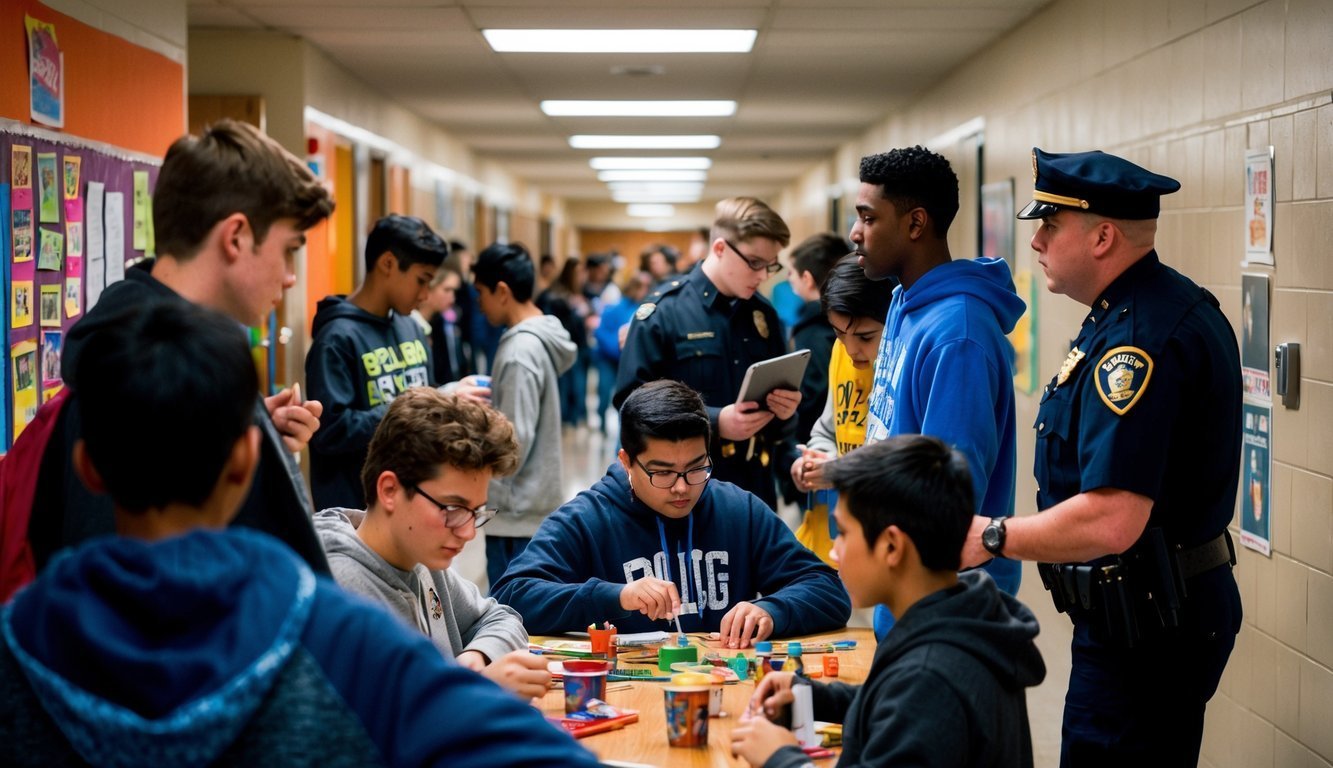PsychNewsDaily Publishers
100 Summit Drive
Burlington, MA, 01803
Telephone: (320) 349-2484
PsychNewsDaily Publishers
100 Summit Drive
Burlington, MA, 01803
Telephone: (320) 349-2484
New research finds that relying on police in schools may exacerbate violence, undermine student safety, and contribute to the school-to-prison pipeline.

In recent decades, the presence of police officers in public schools has skyrocketed. Back in 1975, only 1% of schools had police personnel on their payroll. Today, that number has surged to a staggering 44%. This transformation can largely be traced back to the Violent Crime Control and Law Enforcement Act of 1994, which launched the Community Oriented Policing Services program and funneled funds into school policing. The chilling backdrop of tragedies like the Columbine High School shooting in 1999 further cemented a widespread belief that police in schools play a crucial role in enhancing safety.
However, research casts doubt on the effectiveness of school resource officers in preventing violence and handling critical incidents like school shootings. In fact, the very presence of police in schools can sometimes introduce risks for students.
One major issue is the tendency to overlook the underlying problems that contribute to violence. Proponents of police in schools often argue that increasing security measures will keep students safe. Yet studies show that many people who commit school shootings are already known to school authorities, highlighting a significant gap in support systems for those grappling with behavioral and mental health challenges. Rather than focusing resources on policing, schools might be far better off investing in social workers and mental health professionals who can tackle these core issues head-on.
Another concern revolves around the ambiguous roles of school resource officers, which can vary significantly from one school district to another. While some officers manage to build positive relationships with students and successfully address certain types of crime, others may adopt a more punitive approach, inadvertently undermining their intended purpose.
The students’ perception of safety is another area where reliance on school police has proven complicated. Research indicates that the presence of school police does not necessarily correlate with a heightened sense of security among students. Initially, many may feel protected; however, this feeling tends to wane over time, particularly for those who experience disciplinary measures involving officers.
The relationship between police presence and the criminalization of minor infractions is especially problematic. Studies link the presence of police in schools with an increased tendency to report student misbehavior to law enforcement. This trend feeds into the troubling ‘school-to-prison pipeline,’ disproportionately affecting marginalized communities by criminalizing not just serious offenses, but also minor missteps.
Beyond these troubling dynamics, the mere presence of police in educational settings raises serious concerns about potential violations of students’ rights. Cases of unlawful searches and breaches of privacy are not uncommon, peeling back the layers on the constitutional rights at stake during enforcement actions in schools.
To improve the effectiveness of school policing, a few key strategies can be embraced by educational institutions. Meaningful collaboration between school administrations and law enforcement can create a framework for better integration. Clearly defining the roles and expectations of school police is crucial, as is working closely with mental health professionals to foster a supportive atmosphere. Providing officers with training focused on child development and de-escalation strategies can also pave the way for more positive interactions. Additionally, involving school resource officers in school leadership and offering them ongoing professional training can help bridge the gaps in understanding and practice.
As educational communities seek effective methods to ensure safety, current research strongly suggests that the reliance on school police officers may not be the best approach. The complexities surrounding school safety demand a more nuanced understanding and strategies that put the well-being of students front and center.